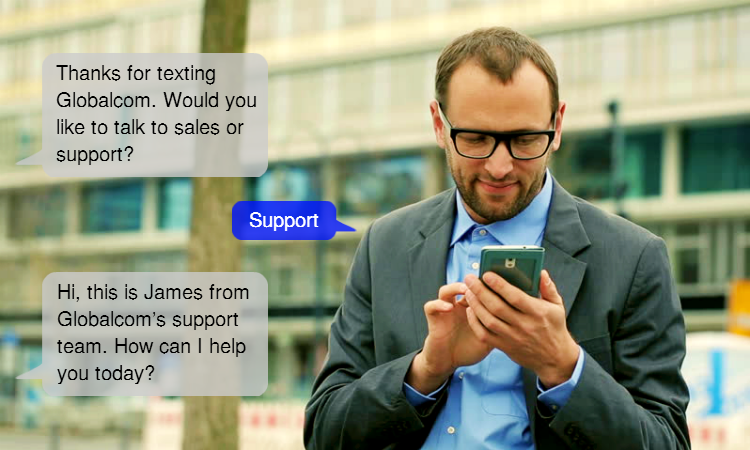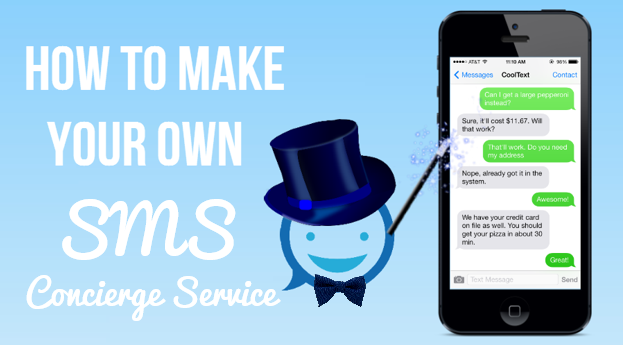You’ve heard all about the benefits of text messaging for business— text has a 98% open rate compared to 20% for email, 90% of texts are read within three minutes, etc. In addition, 64% of customers want to text your business.
All that’s great. You love it. But how do you actually do it?
We’ll show you how.
How do I get a text-enabled number for my business?
It’s pretty easy to get a text-enabled number for your business—the real question here is whether or not you want a short code or a long code.
There are two types of short codes: dedicated, which means you have full rights to use it; and shared, which means different companies can send and receive on the same short code (managed by keywords that the user has to text in).
For long codes, you can own a number which means that you can transfer it and hold on to it without the risk of it being revoked. All numbers are dedicated, which means you control all traffic. Businesses can add text messaging services to their existing phone numbers even if they haven’t used it previously.
Below is a breakdown of the benefits and drawbacks associated with short codes and long codes.
| Short codes | Long codes | |
| Traditional use | Marketing | Transactional messages |
| Cost | $1,200-$2,000/month | $1-$2/month (U.S.), up to $100/month (international) |
| Volume | No limitations on number per second, unless provider limits | 1 message/second local, 3 messages/second toll-free |
| Vanity | Yes, 466453 spells “GOOGLE” | Yes, 1-800-336-8478 spells “1-800-DENTIST” |
| Voice | No | Yes |
| Ability to respond | Yes | Yes |
| Geography | Restricted to country of origin (U.S. short codes can only be used in U.S.) | International use |
| Purposes | Large-scale marketing campaigns or text notifications, pure automation | More conversational, but the use has expanded to automated, personalized responses like checking balances, resetting passwords, etc. |
| Regulation | Regulated by boards in each country. In the U.S., the CTIA governs their use, including strict opt-in/opt-out rules. Failure to comply means your short code can be revoked. | Long codes are not currently regulated, but mass marketing blasts are frowned upon by carriers and can be blocked. Staying with 1:1 conversations or automation keeps clear from breaking autodialer opt-in rules. |
Once you’ve decided on the type of number you want, the rest is fairly straightforward. All you have to do is reach out to a provider that can text-enable your current number, or a new number. There are several providers on the market, including but not limited to Twilio, Zipwhip and Nexmo.
So you’ve added the option for customers to text your business. Now what?
How do I promote my text-enabled number?
People know your brand is on Twitter. People don’t know your brand is on SMS.
After you’ve chosen your business texting number, you need to promote its existence to customers. This is where you can lean on your existing channels, like your website, social media, and IVR, and email. You can also go old school and print flyers or business cards with your text number on it. Alternatively, if you have the budget for it, you can promote your text-enabled number on TV or over the radio. If you’re trying to drive more text sign ups, you can also hold a contest or offer an incentive and promote it on all of your existing channels.
Whatever channels you decide to use will need to include the following to be compliant with CTIA guidelines:
- Product description
- Program name
- Product quantity
- Link to full terms and conditions containing privacy policy and help information
- STOP instructions (in bold, for recurring only)
- Additional carrier costs disclosure (Message and data rates may apply)
When a customer opts in to a text messaging program, the company must also meet the above conditions in their introductory text message. (For recurring and one-time messages, you don’t need to include STOP instructions or the “Message and data rates may apply” message).
Promoting your new text message channel is proven to get results and increase engagement. Shedd Aquarium drove 325% more event sign ups with a text message CTA than a web CTA in television advertisements.
What to do once you’ve got customers’ contact information
Once you’ve got subscribers’ contact information, it’s time to break them down into segments. This could be by product, promotion, sign up date—any segment that you think of that would help you better serve your customers. One of the best ways to segment customers is to ask them what kind of content they’d like to receive. You can do this through surveys, interviews or focus groups. Text messaging is a great channel for surveys, however, garnering a 45% response rate on average.
Once you’ve segmented customers, you can then deliver targeted messages that are more likely to be engaged with. You can also draw from reports to see what messages/calls to action get the best response rates, then build off of those for increasingly targeted messaging.
Ultimately, market segmentation is a great way to retain customers. And, considering it’s 6 to 7 times more expensive to attract a new customer than to maintain an existing one, it’s also a great way to lower costs.
Conclusion
Getting a text-enabled number is easy, but getting a customer to actually text your business takes a little more effort. By taking advantage of existing channels to promote texting to new prospects, you’ll be able to drive more business, cut costs and increase engagement.
And who doesn’t want that?
Want to learn more about business texting? Download our 2014 Harris Poll report detailing why 64% of customers want to text your business.
Photo credit. Edited.

